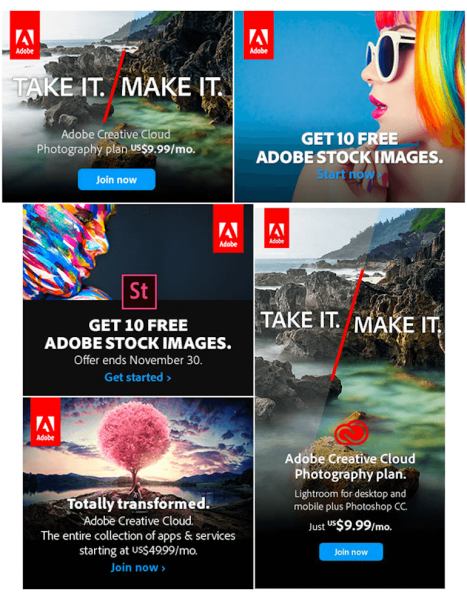The term ‘display advertising’ has many definitions, which makes it difficult – and perhaps even unnecessary – to define it precisely. Wikipedia gives us the following definition of display advertising: ‘advertising on websites or apps or social media through banners or other ad formats made of text, images, flash, video and audio.’ The difference, however, often lies in which types and formats are regarded as fitting in (or not fitting in) with the definition. For example, many marketing specialists regard videos as display advertising, but at Geomares we consider them to be content marketing because of the huge amount of content-related possibilities that videos offer. Therefore, we choose to use the term Premium Display Advertising in our propositions, and then break the options down into print formats and digital formats. On this page, we will dive deeper into the digital display advertising formats, i.e. banners.

Why use digital banners?
With the rise of ad blockers and the general trend around banners, it can sometimes seems as if banners are no longer an effective form of advertising. However, the opposite is true provided that you have appropriate and realistic expectations and goals. We will discuss a few common ones:
More awareness
Banners are extremely suitable for increasing the awareness of your brand or products. A high level of exposure is needed to raise your profile, and that is exactly where display banners can help you.
More sales
Banners can certainly help to generate more sales, but the results are often difficult to track and measure, especially within B2B where a purchase decision can take considerable time and involve multiple people. In addition, it is very important that the banner message is relevant for your target group.
These Adobe banners have a strong focus on direct sales
More leads
Lead generation through banners is a popular goal, and leads are also easier to measure than sales. In B2B, the end user is often not the one to make the final purchase decision, but you should not underestimate their part in the process. Banners with free trial periods, like Adobe giving away ten free stock images, will probably achieve more success among end users than purely sales-focused banners. Trial periods enable users to try out the product, often without having to ask for their manager’s permission. If they are satisfied with the product, they will probably submit a purchase request to their manager at the end of the trial period. Then it is up to you to nurture your leads and convert them into customers.
Staying top of mind
Many services and products are only purchased once in a while, and when that time comes you want your brand to be top of mind! Digital banners can help you to stay in the picture among your target group, but make sure that you keep varying the message and design to avoid ‘banner blindness’.
Measurability
One of the biggest advantages of digital banners is their measurability. Both the number of impressions and the number of clicks are monitored, so you can easily check the impact of your banners. Are clicks important to your campaign? Then you should certainly not forget to calculate the click-through rate (CTR) by dividing the number of clicks by the number of impressions. This knowledge makes it easy to determine the effectiveness of your ads, which enables effective testing and optimisation for new campaigns.

